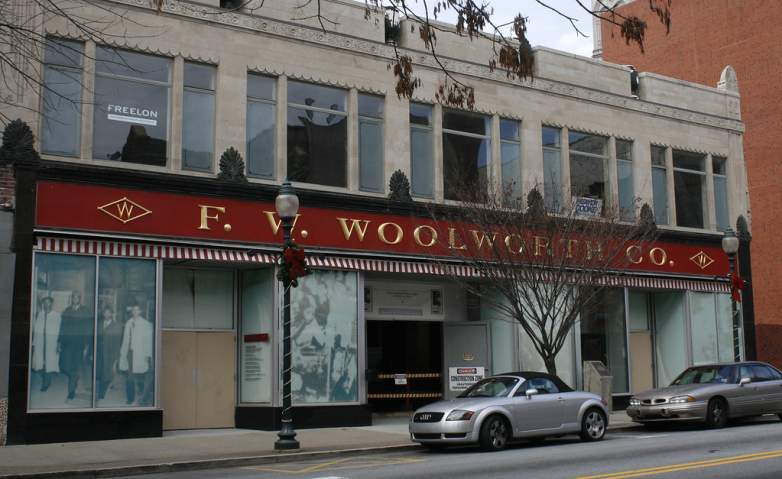
The Greensboro sit-in was a major moment in the American civil rights movement when young African-American students staged a sit-in at a segregated Woolworth’s lunch counter in North Carolina.
The year was 1960, and segregation raged throughout the country, but the students decided they had had enough. According to History.com, they sat down and refused to leave, after having been denied service because of their race. The Greensboro sit-in took place in Greensboro, North Carolina, and has echoes of Rosa Parks and other symbolic moments that eventually helped end segregation in the United States.
The Greensboro sit-in is the subject of a Google Doodle on February 1, 2020 for the 60th anniversary of the action.
Here’s what you need to know:
1. The ‘Greensboro Four’ Were Upset About the Murder of Emmett Till

Greensboro sit in
What sparked the Greensboro Four, as the students were known, to take such courageous action? For starters, according to History.com, they were upset about the 1955 murder of Emmett Till, who was slain after being accused of whistling at a white woman in Mississippi.
Their names were Ezell Blair Jr., David Richmond, Franklin McCain and Joseph McNeil. They were students at North Carolina Agricultural and Technical College.
According to History.com, they also were influenced by Mohandas Gandhi and the Freedom Riders and their principles of non-violent protest. Google says they were also influenced by the techniques of Dr. Martin Luther King Jr.
2. The Greensboro Activists Faced Harassment & Racial Slurs

Site of Greensboro sit in
The reaction was ugly in the short-term, but in the long-term the protests spread and made real change.
According to Google, hundreds of other protesters soon joined them, but the protesters faced a counter movement that included racial slurs being hurled in their direction and even were spit on and had food thrown on them.
Eventually, they prevailed, and Woolworth’s stopped segregating its dining area on July 25th, 1960, Google reports. The protests played a “definitive role” in the Civil Rights movement because they sparked additional protests, eventually making the movement too large to ignore, Google says.
3. The Students Were Asked to Leave But They Prevailed

Another sit in in Durham
CNN.com describes what the students went through when they staged the Greensboro sit-in. They were asked to leave. They refused.
They waited. No one would serve them. They waited some more. Then, the next day, they returned to do it all over again, according to CNN.
In three days, their numbers had swelled to 300. According to PBS.org, the police were called but were “unable to take action against the four students due to lack of provocation.” Woolworth’s closed early that day. None of it deterred the protesters.
4. Both Blair & McCain Went on to Have Successful Lives

The scene at a sit in
What happened to the Greensboro Four?
Ezell Blair Jr. was the son of a teacher who received his B.S. in sociology in 1963. He was a student government leader. He had to move to Massachusetts because the publicity made it difficult to get a job in Greensboro. He went on to work with the “developmentally disabled people for the CETA program in New Bedford, Mass.” He also has worked “with the AFL/CIO Trade Council in Boston and the Opportunities Industrialization Center and at the Rodman Job Corps Center,” reports February One documentary. His name is now Jibreel Khazan.
Franklin McCain graduated from A&T with a degree in chemistry and biology. He went on to work for Celanese Corporation in Charlotte, North Carolina for 35 years, and he stayed active in the NAACP Legal Defense and Educational Fund. He served on university boards and received an honorary doctorate, according to the Civil Rights Digital Library.
5. Richmond Died Young & McNeil Helped the Air Force Improve Its Diversity

The sit in scene recreated
David Richmond died young. He had been a high school track star and was born in Greensboro. He majored in business administration and accounting and became a counselor-coordinator for the CETA program in Greensboro. His life was threatened, so he moved to a mountain community, according to Carolina Theatre.
He worked as a janitor and “battled many demons,” sad that he couldn’t improve the world more than he had. He was 49 years old when he died in 1990 and received a posthumous honorary doctorate degree from At&T State University.
Joseph McNeil earned a degree in engineering physics in 1963 and joined the U.S. Air Force, where he became a captain. He was a Major General in the Air Force Reserves and started diversity initiatives that changed the Air Force forever. He then went into computer sales and worked as a stockbroker and commercial banker. He lives in New York. His “breaking point” was when he was not served a hot dog at the Greensboro bus terminal, according to Carolina Theatre.